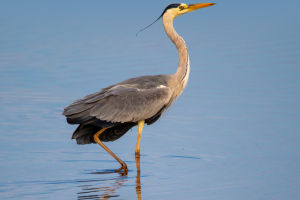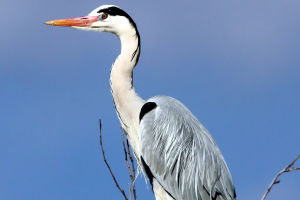Egrets
Every year in April and May, a large number of waterfowl will gather by some lakes. They soar across the sky in flocks, sometimes fly low around the lake, or sometimes nest and breed on the branches of the lake.
Seen from a distance, it is really a sigh of the charm of nature.
In the scientific sense, the egrets that everyone usually refers to are not "one kind" of Egret birds, but a "collection" of four kinds of Egretidae birds that are all white.
In Egretta, there are 12 species of Egret, among which "Great Egret", "Middle Egret", "Little Egret" and "Snow Heron" are known as "Egret" because their whole body is as white as snow.
The adult bird has a milky white body, but if you look closely at its belly, you will see that the feathers on its belly are slightly yellowish. Moreover, it also has a pair of black legs and black feet.
If you are lucky, you will encounter reddish or green heron legs. Its slender, long yellow bill turns black in whole or in part during breeding, and its back is feathered.
Kent Mason is a three-column long, straight, and scattered feathers on the shoulders and back of the great egret, and the feathers are ivory white. Unlike the short and beautiful crest on the head of the Great Egret, the shoulders have mino feathers that extend back and are 10 cm longer than the tail feathers.
The feather branches are slender, sparse and scattered. The longest mino feathers of the great egret can exceed the tail feathers by 30-40 mm.
The great egret, a migratory bird, migrates to its breeding grounds in the north every late March to mid-April. In breeding grounds, they build nests in reeds and tall trees during the four months of April-July.
Their nests tend to be very dense, and it is not uncommon to have more than a dozen nests in a single tree. Although the nest is simple, for the comfort of the children, the parents will cushion the inside of the bird's nest with soft grass blades.
The family will stay until early October before flying off with the family to get through the winter.
Although they migrate in groups, they often travel alone. They can be found leisurely foraging in rice fields, river banks, sandy beaches, mud flats and coastal streams.
The Great Egret, like the "Lone Ranger", is cautious by nature, and will immediately fly away when it encounters someone. When taking off, its wings will be clumsily fanned twice, after all, "everything is difficult at the beginning".
Once flying to a certain height, it can be "easy": Great egrets are very flexible in flight, their legs are straight, their small heads are retracted to their backs, their necks are protruding down into a sac, and their wings are slowly flapping, elegant and beautiful .
Finally, let's talk about the distribution of the great egret: it is widely distributed around the world, and it is distributed in Eurasia, Africa and Oceania.


